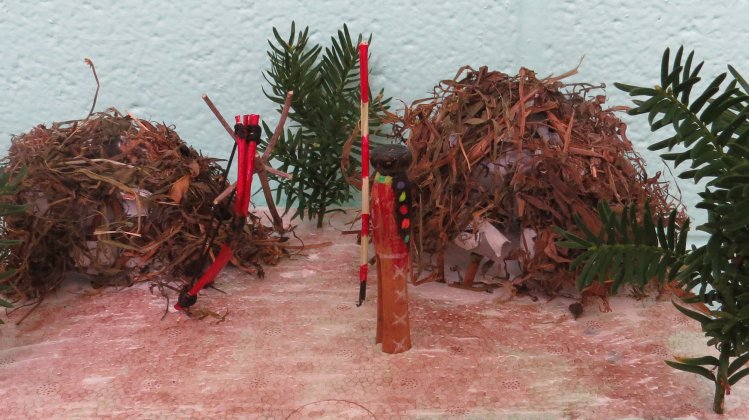Apache
The Apache were a Native American tribe known for their bravery and strong connection to their land. They had their language, customs, and way of life. The Apache were skilled hunters and warriors, making tools and weapons like bows and arrows. They believed in many spirits and held special ceremonies to honor them. Despite facing many challenges, including conflicts with settlers and forced relocations, the Apache have preserved their culture and continue to share their traditions today.

Location and Environment
The Apache lived in what is now New Mexico and Arizona. They were a nomadic group that would sometimes travel as far south as Mexico.
Housing and Shelter
Because the Apache were a wandering group, they spent their time in two homes, one in the mountains and one in the desert. They lived in one place for only short periods before moving. The women built their homes called wickiups. The wickiup was a small, dome-shaped hut. It needed to be more sturdy. A mother and daughter could build the wickiup in a few hours. First, they found a level spot. They drew a circle about eight feet across on the spot. Next, the women dug a small trench beside the circle. Then, thin poles of oak or willow trees were placed upright in the trench to make the frame for the wickiup. The tops of the poles were pulled together and tied with strands of yucca. The top of the wickiup was only five or six feet high in the center. In cold weather, an opening was left at the top of the hut so smoke could escape the fires. Outside, the wickiup was covered with bundles of grass and branches.

Model of a Wickiup

Clothing and Adornments
In the early years, the Apache made their clothing from deer hide. They soaked the hide in water, then stretched and rubbed it to soften it. The men wore breechcloths and moccasins in warm weather. In cold weather, they wore shirts that came almost to their knees. The moccasins reached to their knees or above, with the soles covered with rough, untreated animal skin. The men wore a simple headband of deerskin. Later, the Apache men wore vests like the Mexicans and Americans. The women wore skirts in warm weather and simple dresses in cold weather. The edges of the dresses were fringed and sometimes decorated with dried porcupine quills. They wore their hair straight instead of the more common braided style of many Native Americans. Later, they began wearing Mexican clothing made of colorful cotton.